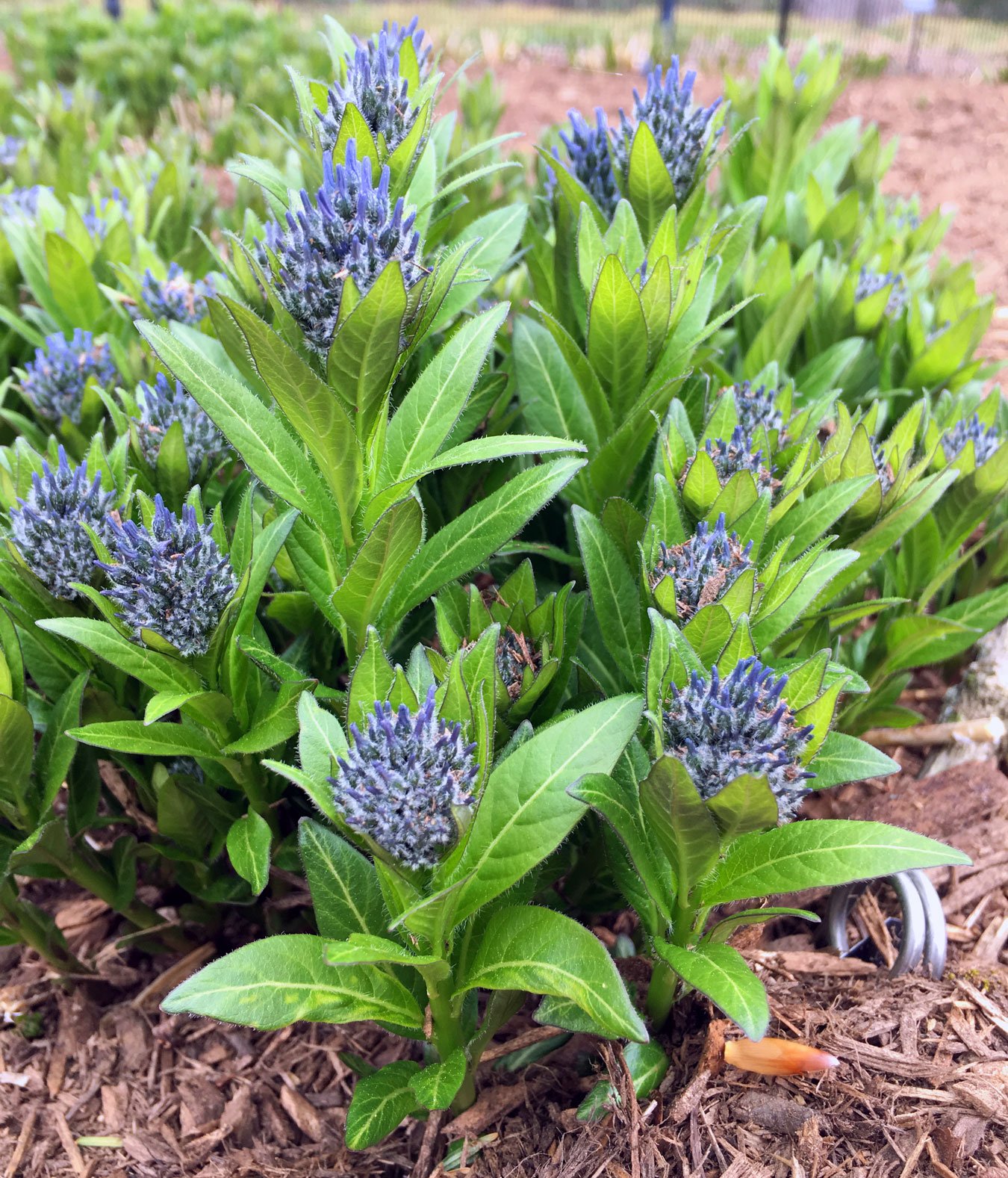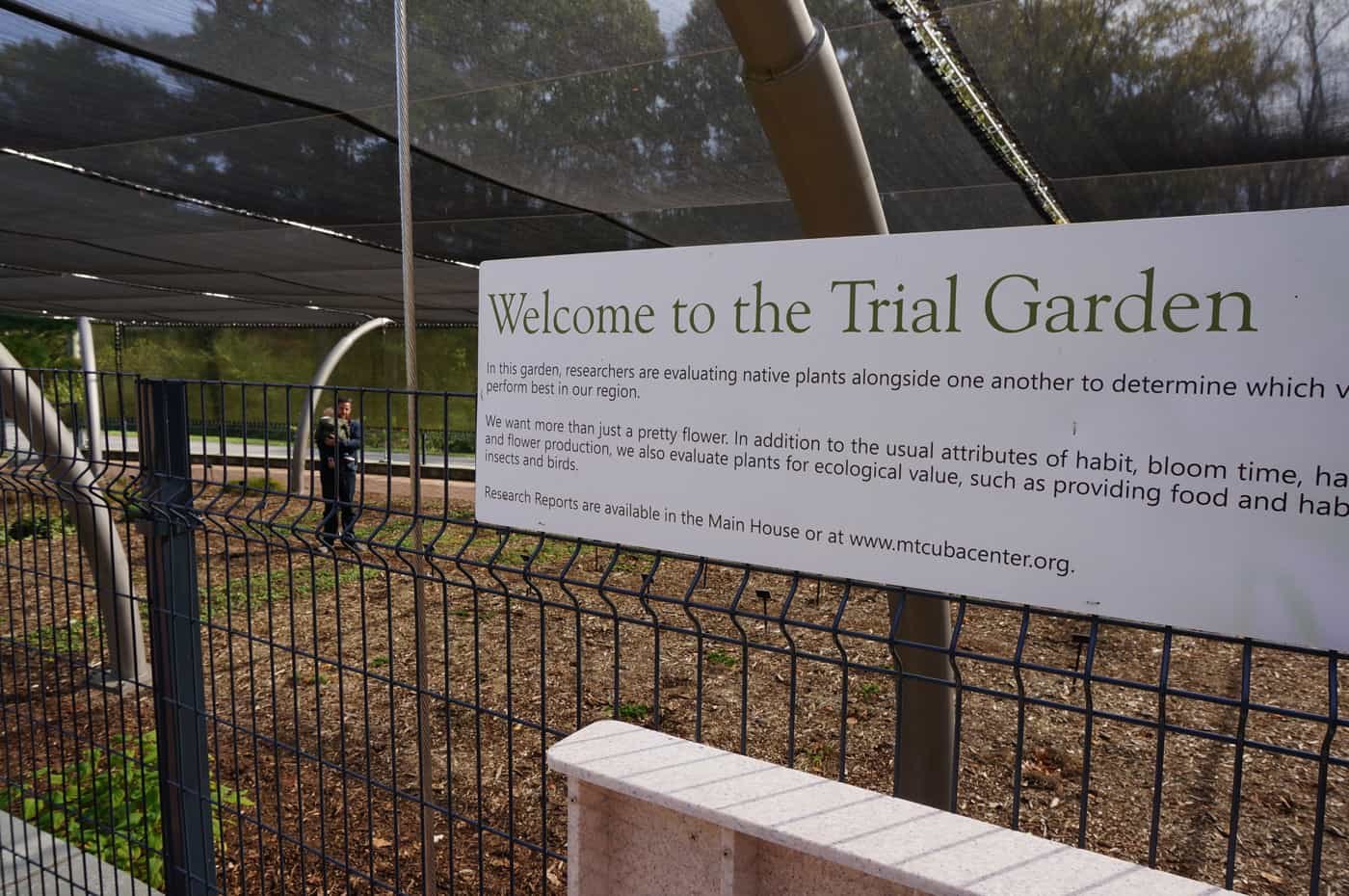A Plant's A Plant, Right? Cultivars, Straight Species, Ecotypes, and Maximizing Your Garden's Ecological Value
An amsonia cultivar at Mt. Cuba Center’s Trial Garden
Okay, so you've decided to add some native plants to your yard, or maybe even a lot. Great! But then you roll up to the garden center, start browsing the selection, and wind up glued to your phone, engaged in endless plant species Google searches and more confused than ever. If you're lucky enough that your garden center even carries more than a handful of natives, you should just buy them, right? A native plant's a native plant, isn't it?
I'm sorry to say that it's not quite that easy. As with anything else, there are folks that will passionately argue about some of these topics at length. In this post, I just want to try to make things a bit simpler for you.
What's a Cultivar?
First things first: If you're buying a native plant at a big box garden center or even at many independent garden centers, there's a really good chance you're buying a cultivar. That's not necessarily a bad thing - we offer some of our favorite cultivars at our plant sales - but here's what you should know. Cultivars (a portmanteau of 'cultivated variety') are almost always clones, sometimes of a naturally occurring variety of a plant and sometimes of a hybridized or selectively bred specimen. The alternative would be a 'straight species' plant, which you could call the garden variety plant.
You can tell that it's a cultivar if it has an extra name attached that’s bracketed in quotation marks. The plant with the common name of Wild Bergamot (Monarda fistulosa) has a number of commercially available cultivars, such as the very popular Monarda fistulosa 'Claire Grace.' At a lot of the big garden centers, you'll be more likely to find this cultivar than the straight species. The cultivar name will be in English as opposed to Latin, must be included in the label, and it comes after the scientific name in single quotes. Sometimes you'll also see the term 'nativar,' which is simply a cultivar of a native species.
There are also intellectual property implications of cultivars. If I work to develop a cultivar of a certain species and there are good commercial prospects, I can name it something like Echinacea purpurea 'Tim's Choice,' and you wouldn't be able to propagate that variety without paying me a licensing fee. It may seem strange to have intellectual property rights over a living thing, but that's how the system works.
The benefit of cultivars is that you know exactly what you're getting. They're sold that way because they exhibit desirable characteristics. Maybe they have a certain distinctive color, or they're more compact, or they're particularly disease resistant.
There's nothing inherently wrong with cultivars. I've planted them in my yard and included them in plant sales that we've run. But there are a few issues to consider, which I explore below.
And to add to the confusion, there's the prevalence of hybrids, which are crosses between multiple species. If they're properly labeled in the nursery (not always the case), hybrids will be indicated with an 'x' after the genus and before the cultivar name, e.g. Coreopsis x 'Redshift.'
Attack of the Clones: Maintaining Genetic Diversity
We can take it as a given that genetic diversity is important to a healthy ecosystem. So if that's our goal, having only a handful of clones dominating the nursery market certainly isn't helping things.
People have been cloning plants forever, simply by dividing them or by taking cuttings (some plants have even figured out how to clone themselves). But if we really want our gardens to do more than just look good - that is, to provide ecosystem services - we should include a significant portion of straight species in our plantings. The gold standard for this is open-pollinated plants that are propagated by seed. By including straight species in our plantings, you give up a bit of control, but you're adding to the genetic diversity of the plant population, and that adds strength to the ecosystem.
It's also important to note if you collect seeds in your garden (or if you're planting species that self-seed like cardinal flowers or many asters), many cultivars won't 'come true' from their seeds.
Origin Matters: Getting into the Weeds With Ecotypes
There's another element to take into account, and that's the geographic origin of our plants. Of course we're already considering that factor by planting natives, but it's not always as simple as saying that just because you live in a plant's native range, the one you're buying at the garden center is geographically appropriate. Within that native range, there's a great diversity of climate and local conditions, which means that plants in any given region may have their own set of characteristics suited to their locality. So there's a possibility that if you collect seed from a butterfly milkweed in Florida, grow it in a nursery, and then sell it to a customer in Maine, it might not be cold hardy enough to survive the winter, even though other members of its species can and do.
That's why we sometimes refer to the ecotype of a certain plant. It's still the same species, but local populations might have distinctive characteristics that other populations won't have. The EPA's ecoregion maps are a useful tool for grouping plants into ecotypes. Unlike the USDA's gardening zones, which take into account temperature ranges only, these designations include climate, topography, hydrology, and more. Firms and government agencies running big ecological restoration projects expect their growers to be able to report the ecotypes of the plants they're using (and they'll generally be using straight species). Some projects will even propagate their own plants from nearby sources to ensure those local characteristics will be present.
THE EPA HAS DIVIDED THE COUNTRY INTO SEVERAL HUNDRED ECO-REGIONS, RANGING FROM BROAD (LEVEL I) TO FINE (LEVEL IV). SHOWN HERE ARE THE LEVEL IV REGIONS OF THE NORTHEAST.
In an ideal world, any native plant you buy would have the propagation method and ecotype listed on the label, but when it comes down to it, most home gardeners don't need to worry about getting that much detail. But if you find a nursery or garden center that says they are selling plants only or primarily grown from local ecotypes, you can be confident that buying from them is a responsible decision.
Some of these issues can come into play with cultivars as well as straight species. The 'Claire Grace' Monardas I mentioned above were derived from plant stock in Mississippi but are widely sold. I've read about problems from customers in northern New England with hardiness, whereas Monardas from a local ecotype would do just fine.
Does Wildlife Care?
This is a complicated question, but many of us are planting natives at least partly for their value to wildlife, so we should consider it. The fact is not much research has been done on the topic, but some early results are starting to come in. I'll follow up with another post specifically about some of this new research [Update: here's the post]. But if you're gardening for wildlife, you can't go wrong with straight species plantings. And if you are buying cultivars, watch out for plants with big variations, like changes in color or double flowers, which might make things difficult for the wildlife that evolved alongside those species.
The Right Plant in the Right Place
I've been talking about variations in genetic makeup and geographic range, but I hope it goes without saying that you should always select plants for the actual conditions where you'll be putting them. Just because a plant is native doesn't mean it will do well anywhere - every plant has its preferences for light, soil type, moisture, etc. Those preferences aren't always on the label, but luckily there are many online resources with thorough information about native species. You should also be aware that some plants are specialists, which is to say they will only thrive in very specific conditions, while others are generalists and can thrive in a wide range of conditions. Think about blueberry bushes, which must have acidic, well drained or sandy soil. Just because they're native to New Jersey doesn't mean I can put one anywhere in my backyard. But an Atlantic ninebark is more of a generalist, able to grow in sandy soil or clay, moist or dry conditions, and a range of light.
Making Sense of It All in the Mid-Atlantic
Mt. Cuba Test Gardens
So how is a home gardener without a horticultural degree supposed to decide what to plant? You could decide that you want to plant coneflowers, but there are literally dozens of commercially available cultivars and hybrids out there. How do you know which to choose?
Well if you live in the mid-Atlantic, you've got a fantastic resource in Mt. Cuba Center, specifically in their research reports from their trial garden. They've run three-year trials on a number of popular genera, pitting different species and cultivars against one another to see which varieties will thrive in typical mid-Atlantic conditions, and which ones you can expect to underperform. So far they've trialed monardas, baptisias, coreopsis, echinaceas, heucheras, and asters, with trials of helenium and phlox pending.
The Bottom Line
There's no simple answer, but if your goal is an ecological garden with wildlife value, and you have a choice, you can't go wrong with sticking to straight species plantings. And best yet is to use plants from local ecotypes whenever possible, though at most retail garden centers, this information simply isn't available yet.
And there's certainly nothing wrong with planting cultivars, especially in parts of your garden where you're trying to achieve a certain effect. Just try to make sure you're not using them exclusively - leave some room for the genetic variation that straight species plants offer. Otherwise you'll be looking out your window at a sea of clones selected for their purely decorative value.



